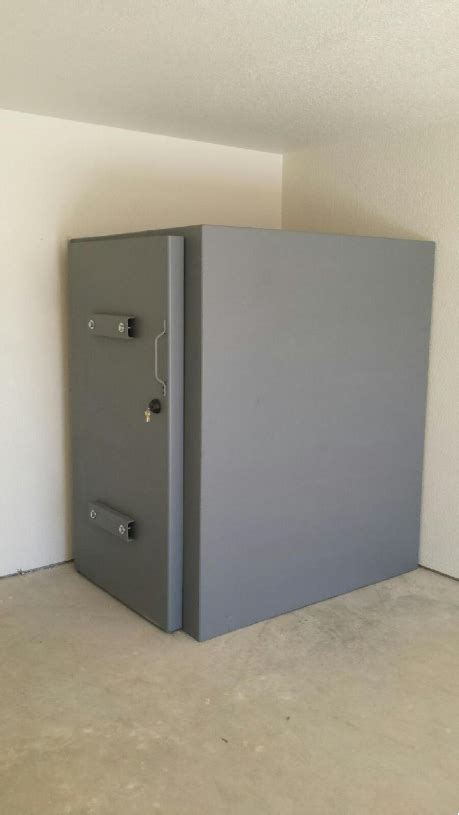The Importance of Metal Storm Shelter Disinfection
The peace of mind a metal storm shelter provides is invaluable. Knowing you have a safe haven during severe weather events is crucial for personal safety and security. However, the importance of maintaining a clean and disinfected shelter often gets overlooked. This is a critical oversight, as neglecting sanitation can expose you and your family to harmful bacteria, viruses, and other contaminants during and after a storm. This article will delve into the crucial role of disinfection in preserving the safety and hygiene of your metal storm shelter.
Why is Disinfection Necessary?
Your metal storm shelter, while a sturdy refuge, is susceptible to contamination. Several factors contribute to this:
- Exposure to the elements: Before, during, and after a storm, your shelter might be exposed to rain, floodwaters, debris, and even pest infestations. These elements carry various pathogens.
- Storage of supplies: Storing emergency supplies within the shelter can introduce dust, mold, or other contaminants.
- Human occupancy: Even with careful preparation, human occupancy can introduce bacteria and viruses. Stress, illness, and the lack of proper sanitation facilities during emergencies further increase the risk.
- Mold and mildew growth: Metal storm shelters, especially those located in damp environments, are susceptible to mold and mildew growth, which can severely impact air quality and pose health risks.
Ignoring these potential sources of contamination can lead to serious health problems, especially for vulnerable individuals like children, the elderly, and those with weakened immune systems.
What are the Best Disinfection Methods?
Effective disinfection requires a multi-pronged approach:
1. Thorough Cleaning:
Before disinfection, a thorough cleaning is crucial. This involves:
- Removing debris: Sweep or vacuum any debris, dirt, or loose materials from the floor and surfaces.
- Wiping down surfaces: Use a damp cloth or sponge with a mild detergent to wipe down all surfaces, paying particular attention to areas where moisture might accumulate.
- Airing out the shelter: After cleaning, open the shelter doors and vents to allow for proper air circulation and drying. This helps prevent mold and mildew growth.
2. Disinfection:
Once the shelter is clean and dry, you can proceed with disinfection:
- Using EPA-registered disinfectants: Choose a disinfectant registered by the Environmental Protection Agency (EPA) that is effective against a broad spectrum of bacteria and viruses. Follow the manufacturer's instructions carefully. Common options include bleach solutions (diluted appropriately) and commercially available disinfectants.
- Focus on high-touch surfaces: Pay special attention to frequently touched surfaces like door handles, light switches, and any shared items stored in the shelter.
- Allow sufficient contact time: Ensure the disinfectant remains on the surfaces for the recommended contact time specified on the product label to ensure effective killing of pathogens.
3. Preventing Future Contamination:
Maintaining a disinfected shelter requires proactive measures:
- Regular inspection and cleaning: Periodically inspect the shelter for signs of contamination (mold, mildew, pests). Regular cleaning helps prevent the buildup of dirt and grime.
- Proper storage of supplies: Store emergency supplies in sealed containers or waterproof bags to prevent contamination.
- Pest control: Take steps to prevent pest infestations, such as sealing any cracks or gaps in the shelter's structure.
What About Specialized Disinfection Techniques?
While regular cleaning and disinfection are sufficient for most situations, specialized techniques might be necessary under certain circumstances:
- Flood damage: If your shelter has been subjected to floodwaters, professional cleaning and disinfection services might be necessary. Floodwaters can carry numerous harmful pathogens.
- Mold infestation: Severe mold infestations require professional remediation to ensure complete removal and prevent future growth.
What are the potential health risks of neglecting disinfection?
Neglecting disinfection can lead to several health risks:
- Respiratory infections: Mold, mildew, and other airborne contaminants can trigger respiratory problems like asthma or allergies.
- Infectious diseases: Bacteria and viruses can cause various infectious diseases.
- Skin irritations: Contact with mold or contaminated surfaces can lead to skin rashes or other irritations.
Maintaining a clean and disinfected metal storm shelter isn't just about cleanliness; it's about safeguarding your health and the health of your loved ones during and after an emergency. Proactive sanitation measures significantly contribute to the effectiveness and safety of your storm shelter, transforming it from simply a refuge into a truly secure and healthy haven.

